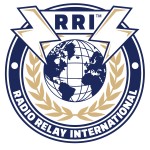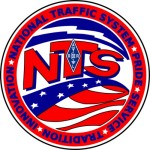
|
Formal Traffic Handling |

|
||||||||||||||||||||
Radio Messaging via Radio Relay International (RRI) and the National Traffic System (NTS) |
||||||||||||||||||||||
Some Recent HistoryThe National Traffic System is an ARRL sponsored program and has been in place since 1949. It grew out of the original radio relay system (the "Rs" in ARRL) that was created in 1914. The system is designed move formal messages in radiogram format through a precisely sequenced and layered system of nets using cw and voice. A parallel digital network (NTS-Digital) was added more recently. This consists of a network of regional and area hubs with relay stations at the terminal points. In July 2016 a new, independent network was formed. This has been named Radio Relay International. The corresponding digital network is the Digital Traffic Network, DTN. RRI has confined its operations to traffic handling above the section level. Operations at the section level and below are NTS and are managed by the appointed Section Traffic Managers. However, the NTS-D operation has largely disappeared with the hubs and relay stations moving to the new group. The important message is that, for the individuals who use the system, nothing has really changed. The format remain the same and the two networks are completely interoperable. RRI, in taking a fresh look at formal traffic handling, is looking at a number of innovations, especially in the area of emergency communications. RRI is also producing new and updated documentation at a swift rate. The following sections cover NTS and RRI documentation, local/independent documentation and Maine traffic nets & resources. New to radiograms and traffic handling procedures? You will want to review the new RRI documentation, the Knox County procedures and complete the composition exercise. And, very important, participate in the various Maine traffic nets. |
|
|||||||||||||||||||||
NTS Information and DocumentationARRL's NTS web page: http://www.arrl.org/nts Table of Contents for the complete NTS Methods and Practices Guidelines . For most ARES operators, the important chapters are Chapters 1 & 2. |
||||||||||||||||||||||
RRI Information and DocumentationRRI Home Page: http://radio-relay.org/ An Introduction to Professional Emergency Communications Preparedness (pdf) : This is an excellent introduction to the traffic network structure, operational modes, procedures and formatting. RRI Traffic Operations Manual FM-001 (2017) : This is the most up to date manual for traffic handling. It is an "interim" edition and an expanded version will be issued later in 2017. RRI Radiogram form 1602 (pdf) : This is an "improved" version of the ARRL form that includes a proper place for the signature. It retains the underscoring and 25 maximum message group count. RRI Radiogram form 1603 (pdf) : This is the same as the 1602 but without the underscoring. Group count is not arbitrarily limited to 25. More RRI documents may be found on the RRI Publications page. As of April 2017, in addition to the above items, there are:
|
||||||||||||||||||||||
Radiogram Composition and Management ToolsThere are a couple of programs that can be used to properly format radiograms and at least one to avoid. Flmsg and the DTN Parser Program fit into the former category. The Winlink radiogram custom form does not adhere to the standards for formatting and does not produce an NTS or RRI compatible text file. Flmsg Radiogram FormThe built in radiogram form in flmsg has a very good user interface. it includes helps for handling instructions and ARL numbers. It will also properly format the message text and compute the check. The printable html output is very useful for producing copies for delivery and record retention. The text output is fully compatible with voice, cw and digital transmission and meets all NTS/RRI standards. Ready to CopyReady to Copy is a message management application for traffic handlers. It is authored by D. Lane Kendall WK4WC. RTC includes look ups for handling and ARL numbers and links to on line databases for call signs and telephone numbers. Like flmsg it has some composition and format checking features. Unlike flmsg, it can be used to produce a printable radiogram from a text input. See http://www.qth.net/w/wk4wc/rtc/ DTN Parser ProgramThe DTN Parser Program was developed primarily to assist ARES operators to prepare batch text file radiograms (see MPG6A8) with addressing headers that can be submitted as an attachment in a Winlink message to a digital network MBO for direct injection into the Digital Traffic Network. It has a composition wizard and comprehensive formatting helps along with useful tools such as zip code lookups. Like flmsg it will produce a printable form. Like RTC, it can take a radiogram in text format and render it as a printable form. For more information, please refer to http://nts-digital.net/mw/index.php/DTN_Parser_Program . |
||||||||||||||||||||||
Local Documentation and a Radiogram Composition ExerciseVisit the Knox County Ham Radio Community Emergency Communications Member Information Page and study the "Guide to Handling Third Party Messages from Shelters" and the "Radiogram Tutorial." Complete the written Radiogram Formatting Exercise (pdf) . This consists of two parts, a simple routine message and a shelter welfare radiogram. Submit your completed radiograms by email per the instructions. |
||||||||||||||||||||||
Maine Traffic NetsA. Maine NTS Affiliated Section Nets Sea Gull Net: This is the official section wide traffic voice net on 3940.0 kHz at 1700 local time. The net operates Monday though Saturday. Maine ARES members are encouraged to participate in this net by listening, learning and then taking and providing traffic. Pine Tree Net: This is a CW traffic net on 3596.0 kHz at 1900 local time. The net operates daily. Maine Slow Speed Net: This is a CW traffic net on 3585.0 khz at 1800 local time. The net operates Monday through Saturday. B. Local and Statewide Nets That Accept Traffic 12-County Net: This is a VHF traffic net on the KQ1L linked repeater system. This net meets Sundays at 0930 local time. Pre-Chimes Traffic Net: This is a new traffic-only net that meets Saturday evenings at 7:30, before the nightly Chimes chat net on the Knox County KC1CG and W1PBR linked repeaters. This is for through traffic only and training is provided. C. Digital Services Maine VHF Digital NBEMS Net: This net meets every Sunday evening at 1900 local time on the KQ1L linked system. Through traffic is welcomed using flmsg. KB1TCE Digital Traffic Station: Radiograms for out of state destinations (through traffic) is accepted by Winlink radio-email, sent to kb1tce@winlink.org. |
||||||||||||||||||||||
QNI NewsletterQNI is an independent newsletter that is published quarterly by James Wades (WB8SIW). From the Mission Statement: QNI is dedicated to promoting genuine emergency communications preparedness. Our newsletter is independently published and distributed free of charge to the Amateur Radio and emergency management community. The opinions contained herein do not reflect the policies or opinions of any particular net or emergency communications organization. Our mission is to provide a forum for EMCOMM volunteers throughout North America. We operate on the premise that Amateur Radio public service volunteers should be, first and foremost, communicators and technicians. If you share this vision, please support QNI. Submit your news and articles for publication. James has a long history in traffic handling and his editorial content holds no punches. See https://qni-newsletter.net/ for a listing of all issues since November 2015. |
||||||||||||||||||||||
|
For comments or questions, please contact KB1TCE at kb1tce(atsign)maine-ares(dot)org |
||||||||||||||||||||||